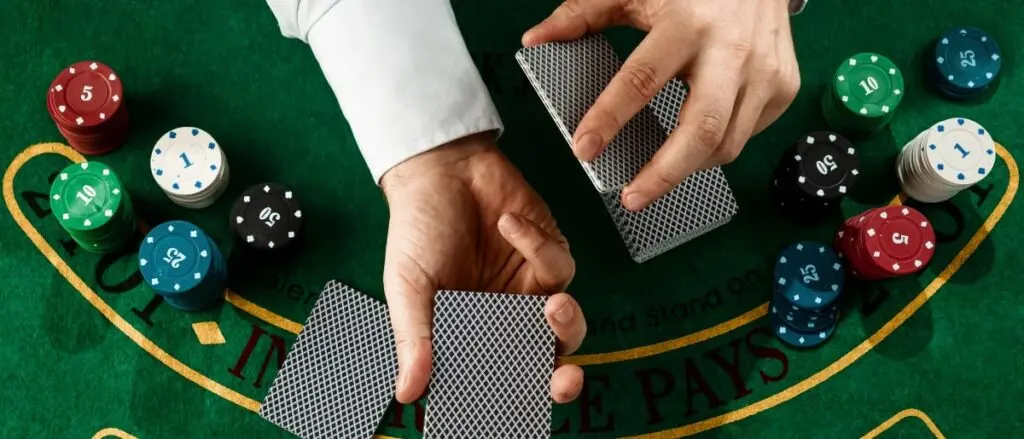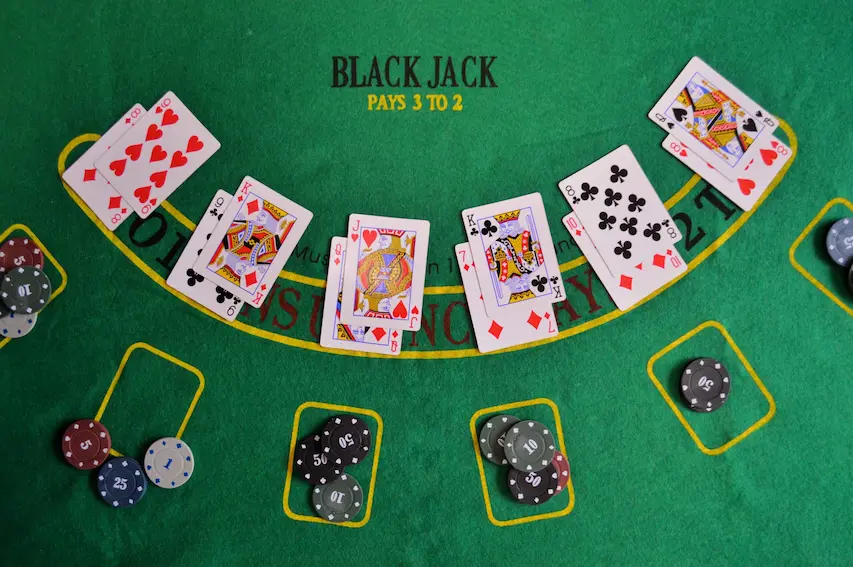When discussing deck penetration in blackjack, we are referring to the placement of the cut card to indicate when it's time to shuffle. The deeper the cut card is placed in the deck, the better the deck penetration. Improved deck penetration makes it easier for card counters to gain an advantage over the casino.
For non-card counters, deck penetration is not significant in terms of the house's advantage. However, for card counters, it is a crucial factor, second only to ensuring that blackjack pays 3 to 2 rather than 6 to 5 when choosing a game to play.
In blackjack games where more cards are visible, it is often possible to offset the slight increase in the house advantage from less favorable rules. Many players would prefer a double-deck game with a cut-off of half a deck and the dealer hitting on a soft 17, rather than the dealer standing on all 17s and cutting off an entire deck.
Deck penetration is essential for finding a game that can be beaten, and casinos are aware of this. However, due to a combination of greed and complacency, many Las Vegas casinos still offer good penetration, cutting off only half to two-thirds of a deck in a double deck game, and just one deck in a six-deck shoe.
Changes for the Better?
The card counting community has largely accepted the gradual erosion of favorable house rules over time. From the initial indifference to Split Aces receiving only one card to the widespread concern when 6 to 5 blackjack was introduced, there has been resistance but also a resigned acceptance of the prevailing rule: those with enough wealth to buy the casino get to dictate the rules.
However, deck penetration is one aspect that has not deteriorated in the post-Beat the Dealer era. It could be argued, based solely on personal recollection, that deck penetration has actually improved slightly since the late 80s.
Recent reports from both downtown Las Vegas and the Strip indicate double-deck games where 75% of the cards are being dealt out, or where individual dealers may cut less than a deck off a six-deck shoe. This is sometimes observed even in casinos that have notches in their shoes to indicate where the cut card should be placed.
Profit VS Protection
The casino's generosity is primarily driven by their desire for profit rather than genuine altruism. Casinos make money through the house advantage and the volume of hands played or slot machines used. Manual shuffling can take anywhere from one to over two minutes on a six-deck table, depending on the dealer and the casino's shuffling process.
On a busy Saturday night, an average of 22 cards are dealt out each round in a blackjack hand, considering 2.7 cards per hand and seven spots plus the dealer. With about 260 cards in play from five decks, approximately 12 hands are dealt before shuffling. If only four decks are used, then only nine or ten hands are dealt.
Many casinos have adopted shuffle machines to reduce this time, but the process of putting six decks in the machine, taking another six out, cutting them, and placing them into the shoe still represents a missed opportunity. Additionally, the public generally disapproves of continuous shufflers. Furthermore, the cost of maintaining these machines, especially when multiplied by dozens or even hundreds of tables, is significant.
This represents a small difference in the number of hands played per hour at each table, but when multiplied across all tables in a large casino, and considering it operates 24/7, it amounts to millions of dollars. This is a major reason why casinos have chosen to maintain the placement of the cut card or, in some cases, have increased the depth of the card penetration compared to a decade ago. Many experts, including casino manager Bill Zender, have argued that casinos lose significantly more money due to misplaced cut cards and the resulting decrease in hands played per hour than they would ever lose to card counters. As surveillance technology has advanced, leading to better detection and removal of card counters, many casinos have opted to move the cut card further back in the deck to maximize their revenue.
Crucial Cut

The depth of the deck is crucial because the main goal of card counting is to reach a point where the ratio of remaining high cards to low cards allows us to gain an advantage over the house through increased bets or varied play, or both.
The true count is calculated by dividing the number of high cards by the remaining decks. It's important to consider the remaining decks to gauge our advantage, as an infinite number of decks would not benefit us, regardless of how high the running count is.
As we see more cards remaining, the standard deviation of the true count increases. A higher true count with very few cards remaining, such as 25 or 30 cards in a well-cut double deck with a true count of +4, gives us more confidence in our advantage.
However, if the remaining high cards are behind the cut card, they won't benefit us. In games with more cards dealt, the true count fluctuates more.
Don Schlesinger's Blackjack Attack shows that in a game where two decks are cut off a six-deck shoe compared to just one, the frequency of reaching a true count of +4 almost doubles, and the frequency of a true count of +6 nearly triples.
Used To Our Advantage
This indicates that we will have increased opportunities to place significant wagers in games with 80% card penetration and utilize Schlesinger's Illustrious 18 or other variations of the basic strategy to improve our odds.
It also enables us to enter and exit the game more lucratively as the true count reaches +2 multiple times. Additionally, it allows us to better withstand minor changes in blackjack rules, such as when the dealer hits on a soft 17.
The most important advantage is that good penetration enables us to play for longer periods. In a time of constant surveillance and scrutiny of blackjack play, it helps us to keep our betting spreads at a more manageable ratio, such as ten-to-one instead of fifteen-to-one, or to play more hands with varied bets.
When the card count becomes highly negative, we can take breaks with less worry about needing to return, allowing for more natural cover like taking a phone call or a bathroom break. Moreover, in favorable conditions, deeper penetration allows for more profitable wonging or team play compared to games with shallow penetration. In double-deck games, tighter spreads can be maintained, and the use of indices and cover can be significantly improved. Expanding the number of hands played, especially when playing with a partner, may even lead to deeper penetration on favorable decks.
Gift Horse Or Trojan Horse?
For the first time in a long while, one of the most crucial factors for successful card counting slightly shifts in favor of the player.
However, it's important to note that casinos are well aware of this increased advantage. The phrase "pigs get fat, hogs get slaughtered" seems fitting here.
Casinos are more comfortable allowing deeper deck penetration because they have become more adept at identifying and removing card counters.
Therefore, receiving 80 cards from a double deck at a Las Vegas strip property should not be seen as an opportunity to bet large amounts and split 10s when the true count reaches +5.
Instead, any improved deck penetration should be used to blend in and remain inconspicuous.
No amount of increased expected value will matter once you've been asked to leave, and every casino in town has your photo on file.


 Offical Site
Offical Site